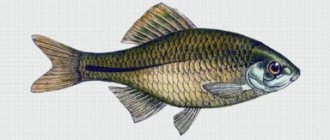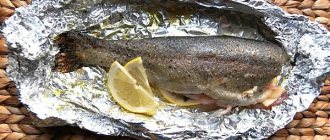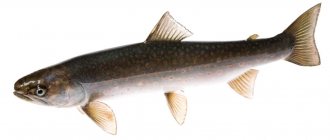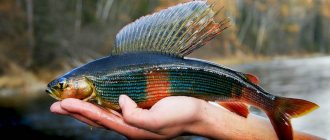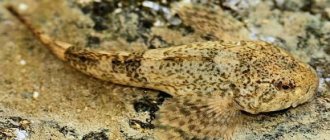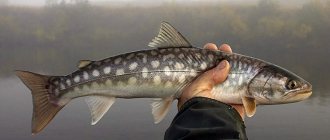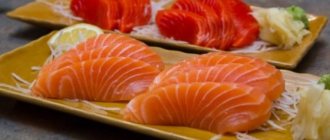Char has several unusual qualities. It is able to regulate the size of the intestines depending on living conditions, winter in reservoirs frozen to the bottom, and go without food for about a year. However, for the consumer, fish is interesting for other properties.
It has no scales, which complicates the cooking process; dishes made from char prolong life, strengthen bones, and restore potency. To benefit from the product, you should learn more about fish, its effect on the body, and the nuances of preparation.
Inside a fish farm
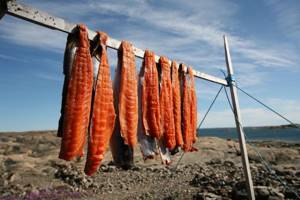
This is how Arctic char is dried in Nunavut (Canada)
What kind of fish
Char is a predatory representative of the salmon family. Found in mountain lakes and rivers. It also lives in the seas, but does not swim far from fresh waters, where it spawns. It feeds on plankton, caviar, small fish, crustaceans, and mollusks. Some individuals eat their own young. Loaches hunt day and night.
There are several dozen subspecies of this fish, differing in geography and appearance. Their general characteristics:
- Torpedo-shaped body.
- Flattened head.
- There are no large scales.
- The back and sides are grayish-blue or brownish-green.
- Reddish belly, becoming brighter during spawning.
- A strong backbone with long bones (almost no small bones).
- The meat is red-orange.

Loaches are divided into several forms:
- nautical. It lives off the coast of the Atlantic, Pacific and Arctic oceans, and swims to river mouths to breed;
- river. Looks like a trout;
- lake Often found in mountain reservoirs. Due to the lack of a large amount of food, its length does not exceed 40 cm.
Among the subspecies of fish, the most famous are:
- Far Eastern. Size up to 50 cm, tastes like pink salmon. Distributed in the Kuril Islands, Primorye, Amur Region, Khabarovsk Territory.
- White or Kamchatka. It is distinguished by the presence of many light spots on the body. The main population lives in Kamchatka.
- Arctic. It can reach a weight of about 15 kg.
- Boganidsky or Bogandinsky. Found in Siberia in reservoirs with a good supply of oxygen. In lakes of Karelia it reaches 80 cm in length.
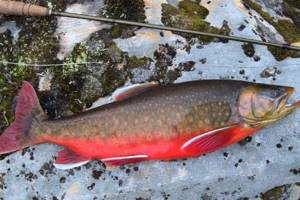
Attention! The Yambuy char is not related to fish. This is the name of the mountain heights in the Sakha Republic.
Composition of char
This product is richest in the following nutrients:
- vitamins, especially group B;
- phosphorus;
- potassium;
- magnesium;
- selenium;
- Omega-3 fatty acids.
B vitamins ensure coordinated activity of the whole organism. They are necessary for the normal transmission of nerve impulses along nerve fibers, for the effective functioning of the immune system, the formation of blood cells, especially red blood cells, which provide all organs and tissues of the body with oxygen and nutrients. With a deficiency of vitamins of this group, anemia and neuropathy (impaired nerve impulse conduction) develop, and a person is constantly susceptible to infections due to poor functioning of the immune system.
Phosphorus is extremely important for the musculoskeletal system: bones and joints. In addition, a sufficient amount of this mineral supports thought processes at a higher level. It is worth noting that char contains more than 30% of the daily requirement of phosphorus.
Selenium is found in a fairly small number of foods, so the fact that its concentration in this fish is more than 20% of the daily value is truly a unique phenomenon.
Advice! To get the maximum amount of selenium, it is recommended to consume char with the foods shown in the picture below.
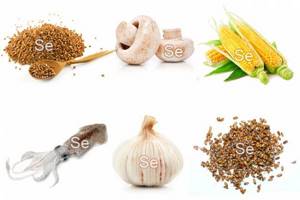
Beneficial features
Red char fish is valued by culinary specialists for its good taste, and doctors often include it in the medical menu. The main list of benefits of char:
- Reduces the risk of blood clots.
- Cleanses the body of cholesterol.
- Strengthens blood vessels.
- Has a beneficial effect on brain function.
- Increases the body's resistance to infections.
- Prevents early skin aging and cell destruction.
- Reduces the likelihood of developing tumors.
- Improves reproductive functions, increases potency.
- Normalizes the functioning of the gastrointestinal tract.
- Reduces nervousness.
- Saturates the body with calcium.
- Prevents the development of ophthalmic problems.
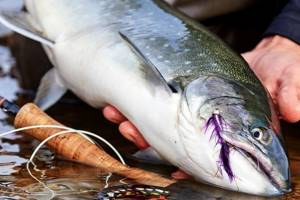
Contraindications and possible harm
There are no direct contraindications to consuming char. However, red fish is a potential allergen. People with seafood intolerance should avoid this type of food.
If the rules for preparing and selecting a product are not followed, char can be not only beneficial, but also harmful. The consumer needs to consider the following:
- Stale fish causes food poisoning.
- Char caught in the wild may be infected with helminths. Meat must be subjected to good heat treatment.
- When frying, fillet loses some of its beneficial properties, becomes more caloric, and absorbs harmful cholesterol.
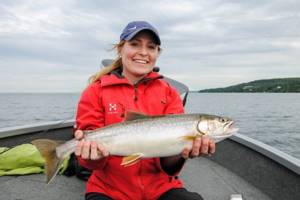
What are the benefits of char fish?
The unique composition of this fish determines the presence of many beneficial properties.
Firstly, due to the content of Omega-3 fatty acids, char helps maintain normal cholesterol levels in the blood, which prevents the occurrence of unwanted cardiovascular pathologies (myocardial infarction, stroke).
Secondly, eating it helps strengthen bones. Bone tissue absorbs calcium and phosphorus contained in fish. This contributes not only to an increase in tissue density, but also to good growth of bones in length in children.
The high concentration of potassium in this product (12% of the daily value) makes it extremely useful for maintaining normal muscle function and ensuring water and electrolyte balance in the body.
Fish is also good for the nervous system. Improved conduction of nerve impulses due to the presence of B vitamins ensures increased resistance of the body to stress and mental work, and increases performance.
Due to the presence of selenium, regular consumption of char improves immunity, slows down cell division, which leads to a reduction in the risk of tumors and slows down the aging of the body. Regular use of this product literally prolongs youth by optimizing metabolic processes in the body.
The benefits of magnesium, contained in large quantities in char, for the body:
Pregnant and lactating
Char is recommended for pregnant and lactating women for the following reasons:
- In the 1st trimester, the vitamins and microminerals included in the product contribute to the normal formation of the neural tube of the embryo. Magnesium, which char is rich in, reduces the possibility of miscarriage, premature birth, and fetal hypoxia.
- In the second half of pregnancy, fish saturates the mother’s body with the elements necessary for intensive formation of the placenta and restores the woman’s energy costs.
- Char meat contributes to the normal course of childbirth, as it helps maintain tissue elasticity.
- The product saturates breast milk with substances beneficial to the baby.
The benefits of fish
1. Omega-3 fatty acids help maintain cholesterol levels in the blood, which is the prevention of cardiovascular diseases and primarily heart attack and stroke, as well as fight various inflammatory processes.
2. Phosphorus and calcium contribute not only to the strengthening of bone tissue in adults, but also to bone growth in children.
3. Potassium is necessary for strengthening and normal functioning of muscle tissue and maintaining normal water-salt balance in the body.
4. B vitamins increase the body’s performance, are beneficial for the nervous system, and help to cope with stress and depression more easily.
5. Selenium helps strengthen the immune system, slows down the aging process, promotes rejuvenation of the body, and reduces the risk of malignant tumors.
6. Dietary meat of this fish is a good product for those who want to lose weight. Its high protein content and lack of fat makes it a good product for any lunch or dinner. If you steam or boil it, then this meat is also suitable for therapeutic nutrition.
7. Vitamin A is necessary to prevent ophthalmic diseases and helps to recover faster from visual stress.
8. Char meat is a natural source of compounds that help normalize sleep and prevent the development of somnological disorders.
What are the benefits of char for women?
The benefits of char for women can be considered from the point of view of body rejuvenation.
Experts have come to a consensus that with regular consumption of char meat, after a short period of time, you can notice that the skin becomes smooth and silky, and acne decreases.
Antioxidants help fight the negative effects of the environment on the skin, strengthen the circulatory system in the body, cell renewal occurs faster, which enhances the anti-aging effect.
Char during pregnancy
The meat of this fish will be useful for pregnant and lactating women. A high concentration of magnesium contributes to the successful gestation of a child and the proper formation of the internal organs of the fetus.
During the period of breastfeeding, it is necessary to include this fish in the daily diet, since the baby will regularly receive the whole range of useful vitamins and microelements through breast milk.
Is char allowed for children?
As mentioned above, the meat of this fish will be useful for strengthening and growing bones in a child, which contributes to the proper development of the small organism as a whole.
A child especially needs magnesium to form the nervous system, as well as selenium to strengthen the immune system and protect the fragile child’s body from infections.
You can introduce a new product into baby food starting from the age of three and in small portions, so as not to provoke an allergic reaction and carefully monitor the baby’s reaction to this fish.
Benefits for older people
1. In old age, there is a risk of developing heart attacks and strokes. And this product, as written above, can act as a preventative against cardiovascular diseases.
2. In older people, bone fragility increases, which leads to frequent fractures, so char meat can reduce the risk of developing this disease.
3. The ability to prolong youth and slow down the aging process of the entire body is also an important factor for older people.
Benefits and harms in diseases
Depending on the disease, experts indicate some features of the impact of char on health:
- hypertension. Fish is rich in substances that help normalize blood pressure. People suffering from pathology are advised to eat 100 g of the product daily;
- pancreatitis. In case of chronic disease in remission, fish helps restore the balance of vitamins and minerals. During an exacerbation, char is prohibited;
- thrombosis. Only properly prepared products are allowed: steamed, grilled, baked in the oven;
- osteoporosis. Red fish - contains substances that promote the accumulation and absorption of calcium. It is advisable for patients to eat char daily.
Features of reproduction
This red fish comes out to spawn at about 6 years of age. She does this several times. Normal spawning migration occurs at the beginning of summer and at the turn of the summer and autumn periods.
However, eggs can be laid not only in summer and before winter, but also at the beginning of winter and, presumably, in spring. In some reservoirs, spawning will be extended even further.
In some regions, fish lay eggs both during the day and at night. Where the spawning rhythm of char is clearly expressed, for example, in the rivers of Novaya Zemlya, it is divided into 2 races - winter and spring.
After the eggs are laid, the fry enter a long river period. Juveniles spend about 3 years in rivers.
After reaching maturity, individuals go to sea. They spend about 3 months there.
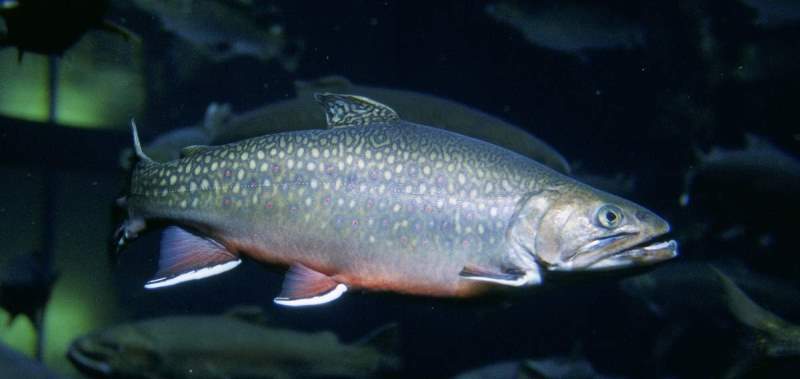
Anadromous varieties are large, the size of individuals reaches almost a meter, and their weight is up to 15 kg. It is an agile predator that feeds on other waterfowl.
Recommendations from nutritionists for losing weight
Nutritionists recommend including red fish in your diet. It is fattier than hake or halibut, but contains more amino acids. If a person has a choice between salmon, salmon or char, it is better to take the latter. Its calorie content is lower than that of the listed varieties. When losing weight, you need to follow several rules:
- Steam, bake, boil fish.
- If you are overweight, eat the product 1-2 times a week, 100 g.
- After eliminating extra pounds, you can use it more often.
- Avoid smoked, salted, and oil-fried fish.
Is char good for pregnancy and breastfeeding?
The product is recommended for regular use by nursing women and during pregnancy. The high concentration of magnesium in this product has a good effect on bearing a child. This is due to the fact that in the prenatal period the fetus’s need for magnesium for the normal formation of internal organs is extremely high.
Attention! Magnesium is especially useful in organizing the baby’s nervous system. Therefore, consuming foods high in this microelement, including char, has a positive effect on pregnancy.
It is also necessary to include fish in the daily diet of nursing mothers. The optimal set of microelements and vitamins in this fish, which is passed on to the baby through breast milk, is necessary for the normal growth and development of the baby.
Nutritional value, calorie content
Nutritional value of char per 100 g:
- proteins – 21 – 23 g;
- fats – 5.48 – 5.7 g;
- carbohydrates – 0;
- cholesterol – 59.83 g;
- water – 72 – 73 g;
- saturated fatty acids – 0.9 g.
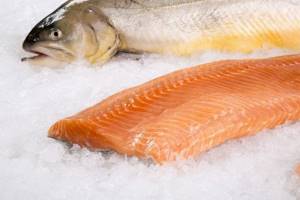
Vitamins:
- choline (B4) – 64.7 mg;
- niacin (PP) – 2.92 mg;
- pantothenic acid (B5) – 0.75 mg;
- pyridoxine (B6) – 0.28 mg;
- thiamine (B1) – 0.14 mg;
- tocopherol (E) – 0.18 mg;
- riboflavin (B2) – 0.12 mg;
- retinol (A) – 35.45 mcg;
- folic acid (B9) – 14.98 mcg;
- cobalamins (B12) – 0.97 mcg;
- phylloquinone (K) – 0.098 mcg.
Minerals:
- potassium – 316.577 mg;
- phosphorus – 269.1 mg;
- sodium – 50.91 mg;
- magnesium – 34.416 mg;
- calcium – 25.66 mg;
- zinc – 0.99 mg;
- iron – 0.37 mg;
- manganese – 0.066 mg;
- copper – 71.61 mcg;
- selenium – 12.71 mcg.
100 g of raw char – 134.761 kcal.
Calorie table for different cooking methods
| Treatment | Kcal per 100 g |
| Frying | 194,31 |
| Smoking | 144,7 |
| Pickling | 136,51 |
| Cooking | 134,1 |
| Extinguishing | 133, 21 |
| Baking in the oven | 133,12 |
| For a couple | 132,47 |
| Caviar | 134,8 |
Dried, smoked char
It is not advisable to dry red meat, since the cooking method deprives the product of its unique taste characteristics. Smoked char is considered a delicacy. When processed hot or cold, it retains its tenderness and attractive color.
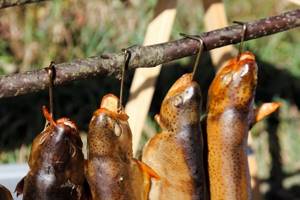
However, eating fish in this form is dangerous:
- Artificial colors and flavors are often used in cooking. In addition, during the smoking process, a large number of carcinogens are formed, which contribute to the formation of cancer cells.
- A hot smoked product loses some of its beneficial elements.
- A piece of such fish contains more calories than boiled, steamed, grilled or oven-baked fish.
How to cook char
It is convenient to prepare, since you do not need to peel the scales; just rinse it well under cold water.
It is most beneficial to bake, boil or steam this fish, this way you will retain maximum beneficial properties with a minimum of calories.
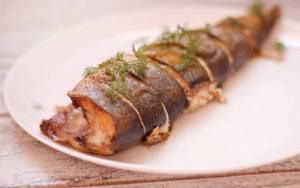
It’s very tasty to bake it in the oven (or on the grill) in foil with vegetables or lemon. You can cook excellent fish soup or make an excellent filling for pies or pies from meat.
It is not recommended to fry char, as its calorie content increases and its beneficial properties and taste decrease.
You can pickle loach, but only if you are absolutely sure of the quality of the product and that it is not infected with parasites! Since not all microorganisms are killed during salting, eating such meat can lead to negative consequences.
How to choose and store correctly
Frozen char should be selected according to several principles:
- A high-quality carcass has no creases or cracks.
- The fins of the fish should be pressed tightly against the body.
- The natural color of the gills is pink.
- A normal product has a solid tail and fins.
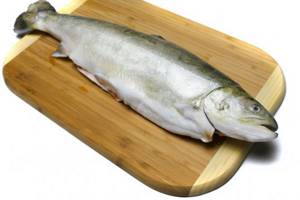
In the photo you can see the natural appearance of the char. Important points when buying chilled fish:
- after pressing, the dents should level out;
- gills of fresh fish with a pink tint;
- transparent eyes without white film.
A frozen carcass can be stored for up to 7 months in a freezer at a temperature of -18. Fresh fish must be cooked within a maximum of 3 to 4 hours after purchase.
Body structure of the baleen loach
The body of the loach has a changeable color. Most often, the scales of this fish have a yellowish tint, but orange and golden colors are also found. The fins have rows of darker spots. When the time comes for spawning, most of the body is covered with characteristic epithelial growths. Males can also be distinguished by the leathery crest that appears on the lower and upper parts of the caudal peduncle.
Males are usually larger than females. In addition, the front fins of males are longer. The average body length of the fish reaches 20 cm, and its weight is up to 1.4 kg. The baleen loach reaches its maximum size at the 5th year of life.
What products does it combine with?
Char is best paired with vegetables.
Those who like to experiment should take into account that the simultaneous consumption of incompatible ingredients leads to digestive disorders and reduced absorption of nutrients. Compatibility table with other products
| Fine | Ghee, whey, greens, cabbage, carrots, beets, pickles, green vegetables |
| Acceptable | Rice, buckwheat, lemon, quinoa, tomatoes, butter, vegetable oil, pumpkin, eggplant, zucchini |
| Badly | Meat, poultry, eggs, mushrooms, cream, sour cream, lard, nuts, seeds, potatoes, dairy products, cheeses, feta cheese, wheat, rye, oats, bread, peas, chickpeas, mung beans, beans, beans, lentils, |
Cooking secrets
Important preparation steps:
- Proper defrosting of the carcass.
- Cutting.
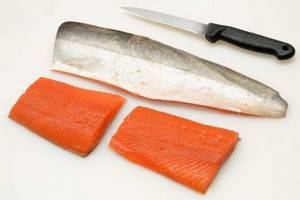
When defrosting, you need to take into account a number of features:
- the fish does not lose excess water if the process takes place slowly in the refrigerator;
- to preserve natural moisture, you need to cover the carcass with plastic wrap;
- Do not defrost fish in the microwave, expose it to contrasting temperatures, or bend it.
Cutting rules:
- Use a knife to remove small scales from the carcass.
- Remove fins and gills.
- When ripping open the belly, make a shallow incision from head to tail without damaging the gall bladder.
- To remove the backbone and bones, it is better to cut the carcass half-thawed.
Advice. If the bile still spreads, you need to cut off the top layer of the affected pulp or treat the area with lemon juice.

You can cook many dishes from char in a frying pan, in a slow cooker, or in the oven. Several recipes are offered to the reader's attention.
Char baked in foil with vegetables
Compound:

- 2 medium fish carcasses;
- 1 small carrot;
- 2 tomatoes;
- 1 sweet pepper;
- several sprigs of parsley;
- 2 tbsp. spoons of olive oil;
- a pinch of Italian herbs;
- 0.5 lemon;
- salt to taste.
Stages:
- For the sauce, mix herbs, salt, olive oil, lemon juice.
- Cut the fish into medium pieces, vegetables into rings or half rings.
- Make bags out of foil and fill them in the following order: carrots, tomatoes, peppers, herbs, char.
- Pour the sauce over the dish, seal with foil, and place in the oven.
- Bake at 180 - 200 degrees for 30 - 40 minutes.
Char pie
Ingredients:
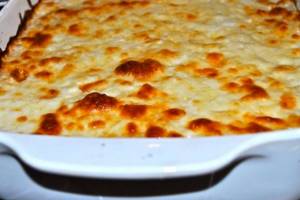
- 500 g puff pastry;
- 800 g fish fillet;
- 2 onions;
- 3 chicken eggs;
- spices and salt to taste.
Preparation:
- Boil the eggs and cut into cubes.
- Divide the fillet into medium pieces, the onion into half rings, mix, fry and cool.
- Place half of the dough on a baking sheet, fill with filling: 1st layer - eggs, 2nd - fish with onions.
- Cover the pie with the remaining dough and pinch the edges.
- Bake until golden brown at 190 degrees.
Char soup
Compound:
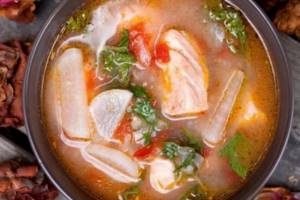
- 1 fish carcass without entrails;
- 2 units each tomato and potato;
- 1 medium onion and 1 carrot each;
- 3 liters of water;
- salt to taste, spices, herbs.
Cooking steps:
- Place the loach in cold liquid.
- Bring to a boil, add salt and collect foam.
- Boil for 15 - 20 minutes, remove the fish.
- Add chopped vegetables and spices to the broth.
- Bring the potatoes until cooked and add the char meat separated from the bones, cook for 1 - 2 minutes.
- Sprinkle with herbs before serving.
How to salt fish at home
Only fish that has not been frozen should be salted. According to housewives, char cooked according to the following recipe turns out delicious:
- Divide the fish lengthwise into two parts.
- Mix salt and sugar 2:1 (1 kg of raw materials – 100 g of dry marinade).
- In a deep container, mix the carcass with the prepared mixture.
- Close the container tightly and put it in the refrigerator.
- After 12 hours, shake the fish to remove excess marinade and leave for another 12 hours.
- Before serving, cut into slices and sprinkle with spices or herbs.
Habitats of the mustachioed loach
The baleen loach has a very wide distribution area. Representatives of the Barbatula family can be found in the following places:
- Freshwater bodies of Europe (from the Pyrenees to the Ural Mountains).
- Basins of the Baltic, Black and Aegean seas.
- Rivers and lakes of the Crimean peninsula.
- Rivers that flow into the Caspian Sea.
- In the Gulf of Finland, the Volkhov, Neva, Ilmen rivers.
- Reservoirs on the northern border of Great Britain, rivers and lakes in the southern parts of the Scandinavian countries.
- Along the entire coastline along the Baltic.
- In Karelia.
- In the rivers Volga, Terek, Don, Ural, Kuban.
